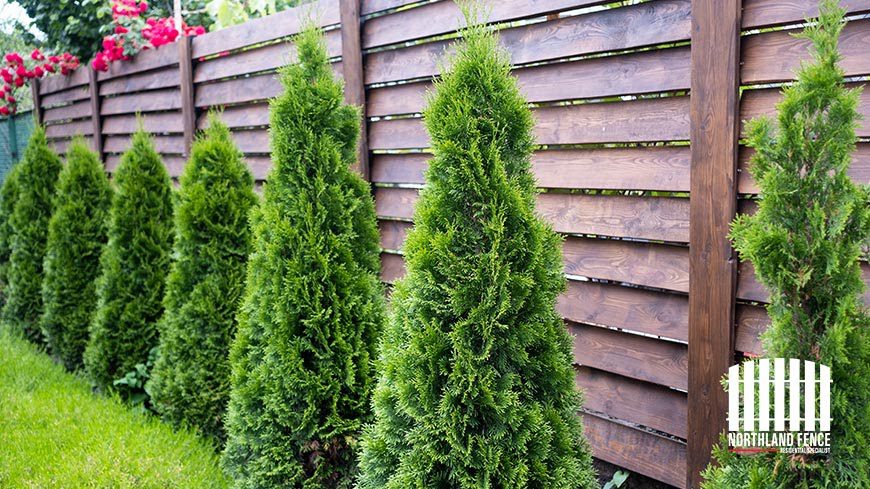Fence Landscaping: What Should I Do?
You’re prepping for springtime, and you’re thinking about how you want to landscape your fence area. There are two things that are on your mind, though: there aren’t enough ideas, and there are way too many ideas! What should you do? Northland Fence is here to help you with landscaping ideas by giving you, well, landscaping ideas!
Why Do You Want to Landscape?
Before we even discuss landscaping around your fence, we gotta ask: Why do you even want to do this? What are you trying to get out of it? There are a few reasons why this can be important. Aesthetically, it can just look super nice. We all love it when our neighbors compliment us on our yardwork! This will definitely get the neighbors’ attention.
There are a few key elements that you want to consider when planting around your fence:
- Will it soften the edges around the fence?
- Do I want to have a theme surrounding my fence (bamboo drapes around a lattice fence, or cottage-style around a white picket fence)?
- Do I want the fence and plants to blend in together?
These are some ideas to take into consideration when landscaping. After landscaping, your fence area will look even more complete. Now that we’ve narrowed down the “why,” let’s find out about the “how”!
How Do I Landscape a Fence?
Just like the key elements of why you want to landscape your fence, there are some elements that you want to think about when asking how you want to landscape your fence. You need to consider:
- Type of fence you have
- Type of plants you want to plant
- Type of plants that work best for your fence
Type of Fence You Have
The type of fence you have is important with landscaping. While a cottage-style garden might work for a white picket fence, it might not work the best if you have any type of metal fence. If you have a fence made of more fragile material or a fence that needs to be regularly stained, you’ll want to have some more space around the fence so you can do that when you need to. If you have a wrought iron fence that requires less maintenance, then an idea would be to line different-colored flowers so they can grow along the fence. Speaking of flowers!
Type of Plants You Want
This is something that you should think about a little bit when landscaping. After all, you don’t want to landscape for no reason — you want to look at your yard and love what you see! This one is a personal choice, so we won’t tell you what you should want, but think about this: What’s your favorite color? What plants do you find yourself drawn to the most? What will make your yard #1 in the neighborhood? These are great questions to ask.
Now that you have nailed that down, let’s talk about the plants that’ll work best around your fence.
Plants That Work Best Around Your Fence
What do we want? Plants! What do they need? A lot of things! When you’re looking for plants, you’ll want to think about how much sunlight they’ll need and how much sunlight and shade that they’ll actually get. There are four possibilities for your plants:
- Part sun – three to six hours of sunlight
- Full sun – At least six hours of sunlight
- Part shade – Between three and six hours of sunlight, but needs shade from intense sun
- Full shade – Requires less than three hours of sunlight
For full-sun plants, you’re going to want to group those plants together with southern exposure or western exposure. For full shade, you’ll want northern or eastern exposure. For plants that are part sun/part shade, you’ll need a mix of both. To make life easier, group plants with similar sunlight requirements together.
What Plants Should I Use?
It can be difficult to figure out which plants will work best for your landscape, but Northland Fence can help you out. Let’s start with the full-sun plants first.
Full-Sun Plants
Remember, these plants need the sun, and the sun can be the difference between your landscape becoming the best in the neighborhood or you getting a strongly worded letter because your plants look like a funeral home for plants. The full-sun plants can be:
- Hibiscus
- Purple coneflower
- Lavender
- Sedum
- Daylily
- Russian sage
If you forget where the full-sun plants should go, remember this: Southwest Airlines (southern and western exposure).
How About Full Shade?
Full-shade plants need a lot of shade, so you’ll want a highly shaded area. These plants are going to be shrubs, evergreen plants (like Kermit the Frog, they stay green), and small trees. What are these plants called? Well, they are plants such as:
- Red twig dogwood
- Gray dogwood
- Northern lights azalea
- Japanese yew
- Taunton yew
- Speckled alder
- American bladdernut (yes, this is its name)
For these full-shade ones, if you happen to forget where they should go and you’re a “Game of Thrones” fan, The North Remembers (northern exposure). Also, eastern exposure. We don’t really have anything to remember that one — just use the process of elimination.
Part Shade? Part Sun?
For the partial-shade plants, these need a little bit of sun each day, but not too much. Some of these plants include:
- Soapwort
- Red flowered lamb’s ear
- Bluebells
- Coral bells
- Western wood lily
For these plants, you’ll want them in a place where the sun shines for a few hours, but you want them to have mainly shade. Now for the partial-sun plants, it’s kind of the same! You want them to be in a position where they can get a good amount of sunlight for three to six hours, and these plants can be:
- Luna red hibiscus
- Daylilies
- Peonies
- Geraniums
- Coneflowers
For these, just remember partial. They need part sun and part shade, and that will equal a happy plant.
These are the plants that you should get, so get to it! You’ve got to start digging and planting them so they can grow and flourish. We guarantee that you’ll win an award for the best landscape in the neighborhood with our guidance. Oh, that isn’t an award in your neighborhood? Well, it looks like you’ve made it one because your landscape is about to look amazing!
Northland Fence Can Help You
Our goal at Northland Fence is to provide you with high-quality American-made fences with the best customer service you can find. We pride ourselves on serving our fellow Minnesotans and making sure that all your needs are met. Call us today at (763) 316-4881 for a consultation.
FAQs
Is fencing considered landscaping?
Not really. Landscaping is more about taking care of the garden and living things. Fencing would be considered hardscaping.
What should I plant around my fence?
It all depends on what type of fence you have and what plants will go well with it. If you have a wooden fence, you’ll want to plant low shrubs and bushes like dwarf spruces. Now, if you have a metal fence, you’ll want things like roses, because that will make a great soft visual against a hard iron fence.
How do you landscape around a fence?
To landscape around a fence, you can plant things along the fence at a curving angle. That way it softens the fence and it looks more interesting. You can also plant along the fence in a straight line, which will look more direct and have several plants within a line together.
Also, keep in mind the sunlight requirements of each. You don’t want to group plants that need six hours of sunlight with ones that only need two hours of sunlight. You’re going to get plants that don’t look too healthy.
What should I plant along a privacy fence?
Tall bushes, trees, and hedges are usually planted around privacy fences. One of the most common plants is one called arborvitae. This is a tall bush that forms a wall when close together and is great for both hot and cold weather. Pine trees are even great to plant along a privacy fence.

